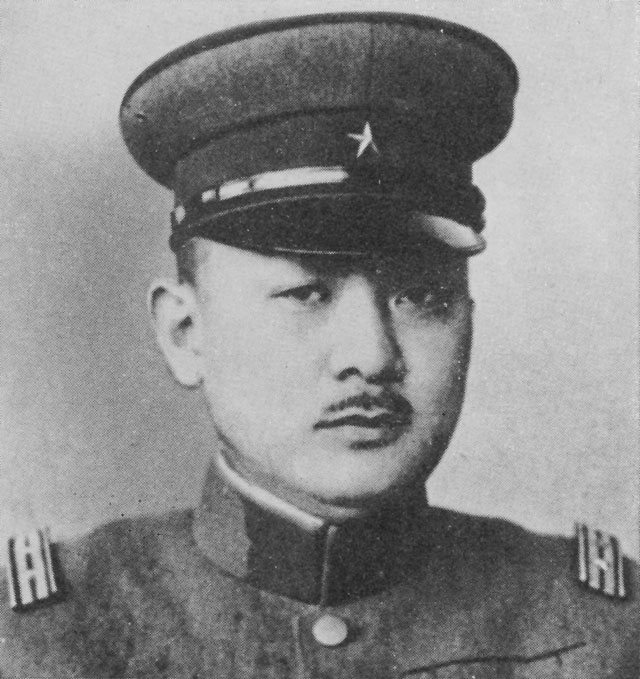Battle Brief: Battle of Iwo Jima
Contributors: Austin Thompson, Rhegan Fritzler, and Alexandra Stich
Battle Background
After successes in the Marianas and the Philippines during 1944, allied leaders made plans to invade Okinawa in April of 1945. Because of the planned date for this operation, the allies faced a period of no offensive movements. In order to fill the lull, they made plans to invade Iwo Jima. Due to it’s location, Iwo Jima served as a warning station for allied bombing raids and provided a base for Japanese fighters to intercept approaching bombers. Intelligence indicated that this would be a good spot for an offensive because it was very lightly defended. Planners thought it would take only a week to capture. The misconception of Iwo Jima’s defenses was strategically planned by General Lieutenant Tadamichi Kuribayashi. He knew that the Imperial Japanese Navy would not be able to offer assistance, so he encouraged his men to inflict as many casualties as possible before dying themselves.
Military Leadership
United States: Major General Harry Schmidt and Vice Admiral Marc Mitscher.
| Vice Admiral Marc Mitscher |
| Major General Harry Schmidt |
 |
| Lieutenant General Tadamichi Kuribayashi |
Plans and Objectives
US: The Marines planned for the Japanese to defended the beach line, not the inner island. The US planned to aerial bomb Iwo Jima for 70 days, then invade. General Harry Schmidt planned for a three day naval bombardment, before the Marines had landed on the island.
Execution
Before the action, B-24 Liberators from the Marianas pounded Iwo Jima for 74 days. These attacks had little to no effect. Arriving off the island in mid-February, the invasion force took up their positions. At 2:00 AM on February 19, the pre-invasion bombardment commenced. The first wave of Marines landed at 8:59 AM, meeting little resistance. But, they soon encountered Kuribayashi’s bunker system. They then quickly came under heavy fire from the bunkers and gun emplacements on Mt. Suribachi. They began to take very heavy losses. The Marines began to find that clearing a bunker did not put it out of action, as the Japanese would only use the tunnel network to make it operational again. This led to several casualties because of the Marine’s misconception of whether a place was “safe” or not. The Marines were slowly able to fight their way off of the beach using naval gunfire, close air support, and armored units. Around 10:35, a force of Marines reached the western coast of the island. On February 23, the Marines were able to make it to the top of Mt. Suribachi and raise their flag. As the battle for the mountain raged, Kuribayashi used the tunnel network to inflict severe losses on the Marines. The Japanese were constantly popping out, surprising the Marines. As the Marines continued to push north, they encountered fierce resistance during which the fighting bogged down. The Marines then began to change tactics to combat the nature of the Japanese defenses due to mounting casualties. The island was declared secure on March 16, but even with this proclamation, the 5th Marine Division still took Kuribayashi’s final stronghold. On the night of March 25, 300 Japanese launched a final assault. Appearing behind American lines, this force was ultimately contained and defeated by a mixed group of Army pilots, Seabees, engineers, and Marines.
Results
Japanese losses in this battle are anywhere from 17,845 - 21,570. Only 216 Japanese soldiers were captured. The island was declared secure on March 26. At this time, about 3,000 Japanese remained alive in the tunnel system. They did anything from carrying out limited resistance, committing ritual suicide, or scavenging for food. The fighting at Iwo Jima was the one battle in which American forces sustained a greater number of total casualties than the Japanese. Due to the cost to take the island, the campaign was immediately subjected to intense scrutiny in the military and press.
Sources
- http://en.wikipedia.org/wiki/Battle_of_Iwo_Jima
- en.wikipedia.org/wiki/Planning_for_the_Battle_of_Iwo_Jima
- http://militaryhistory.about.com/od/worldwarii/p/battle-of-iwo-jima.ht
- http://en.wikipedia.org/wiki/Battle_of_Iwo_Jima#Japanese_preparations
